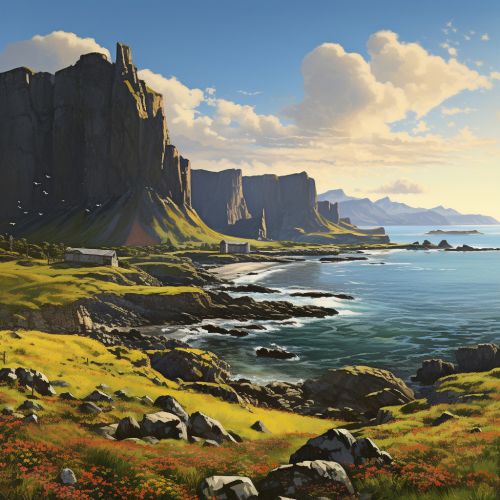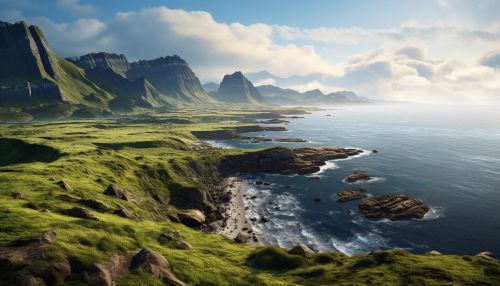Andøya
Geography
Andøya is the northernmost island in the Vesterålen archipelago, situated in Nordland county, Norway. It is separated from the larger island of Hinnøya to the southeast by the narrow Risøyrenna channel. The island is known for its flat, marshy terrain, with the Andøya Bog being one of the largest bogs in Norway. The western coast of the island is characterized by steep mountain cliffs, with the highest point being the 705-meter tall Kvasstinden.


Climate
Andøya has a subarctic climate, with mild summers and long, cold winters. The island is located within the Arctic Circle, which results in the phenomenon of the Midnight Sun during summer and the Polar Night during winter. Despite its northern location, the climate is moderated by the warm Gulf Stream, which results in relatively warm winters compared to other areas at the same latitude.
Flora and Fauna
The island's unique geography and climate support a diverse range of flora and fauna. The marshy terrain of the Andøya Bog is home to numerous species of mosses, lichens, and small shrubs. The steep cliffs along the western coast provide nesting sites for various seabirds, including the Atlantic puffin (Fratercula arctica) and the common murre (Uria aalge). The surrounding waters are rich in marine life, with species like the Atlantic cod (Gadus morhua) and the common minke whale (Balaenoptera acutorostrata) frequently spotted.
Economy
The economy of Andøya is primarily based on fishing, tourism, and space technology. The island's location within the Arctic Circle makes it an ideal base for the Andøya Space Center, which conducts rocket and balloon launches for atmospheric research. The rich marine life surrounding the island supports a thriving fishing industry, with cod being the primary catch. Tourism is also a significant part of the economy, with visitors attracted by the island's natural beauty, wildlife, and opportunities for activities like bird watching and whale watching.
Culture
Andøya has a rich cultural heritage, with traditions deeply rooted in the island's fishing history. The annual Lofoten Fishery is a significant cultural event, attracting fishermen from across the region. The island is also known for its traditional Norwegian architecture, with many buildings featuring the distinctive 'rorbu' (fisherman's cabin) style. The Andøy Museum provides insights into the island's history and culture, with exhibits showcasing traditional fishing equipment, local art, and archaeological finds.
